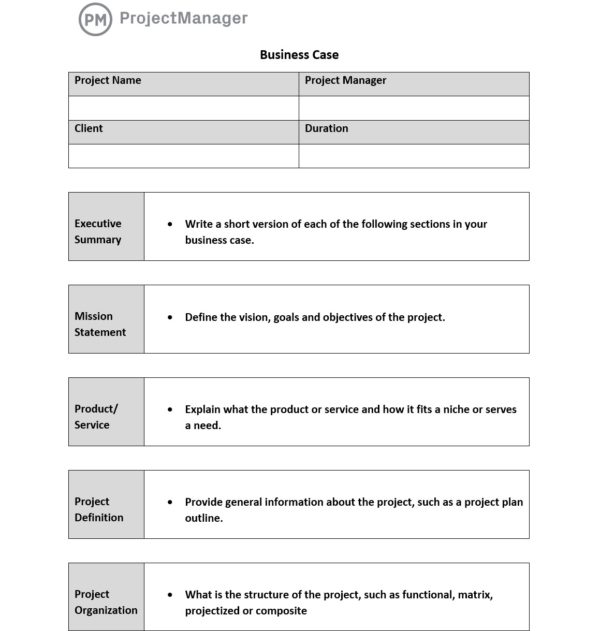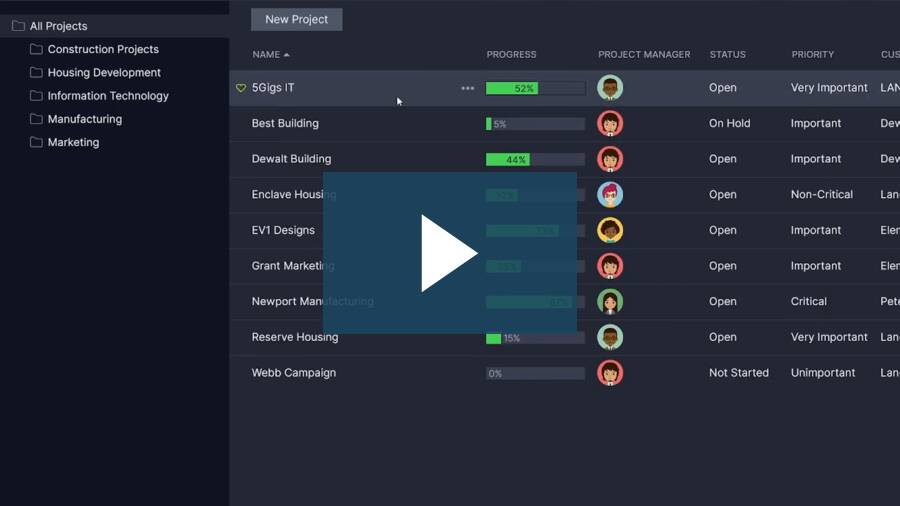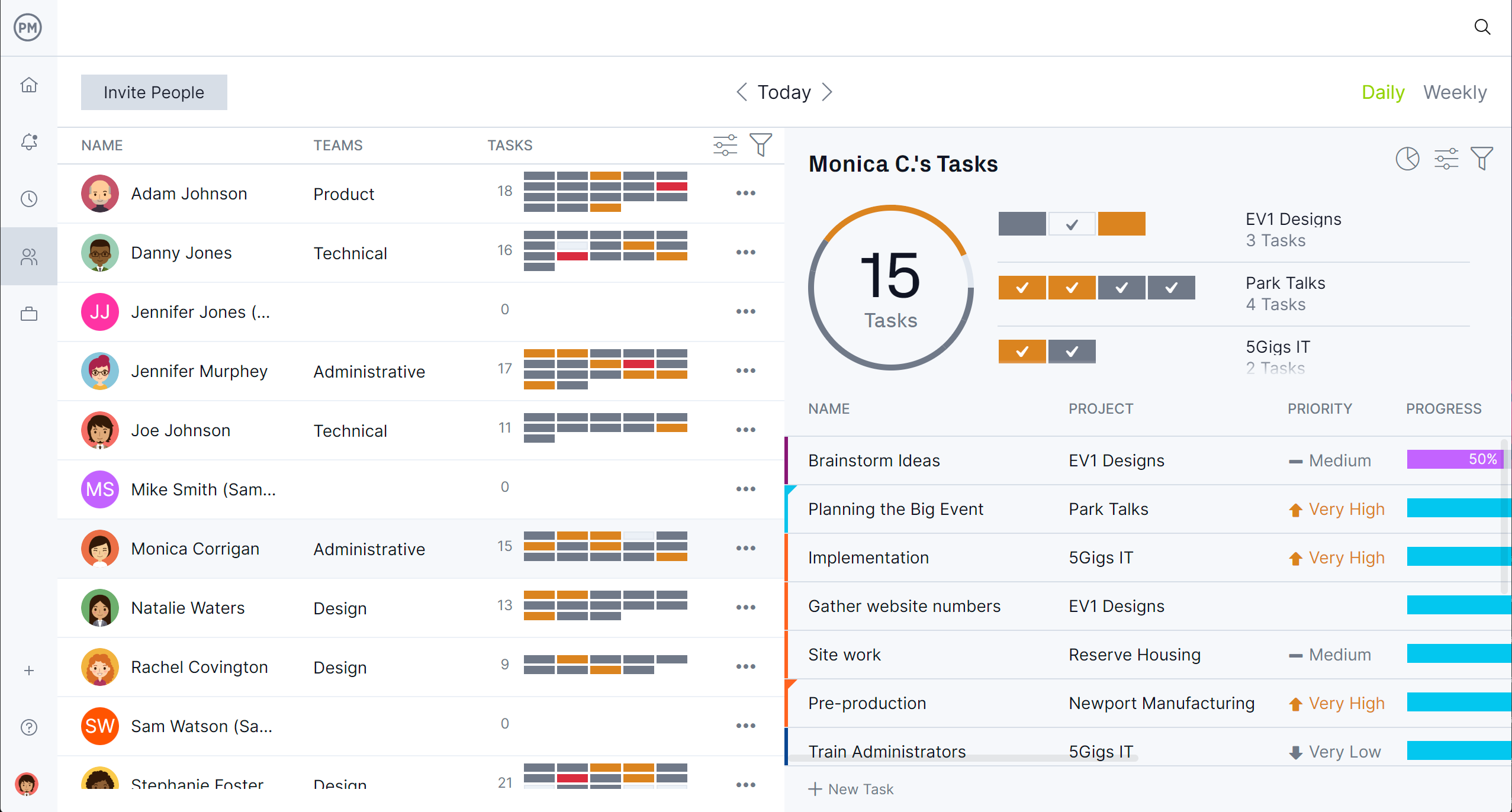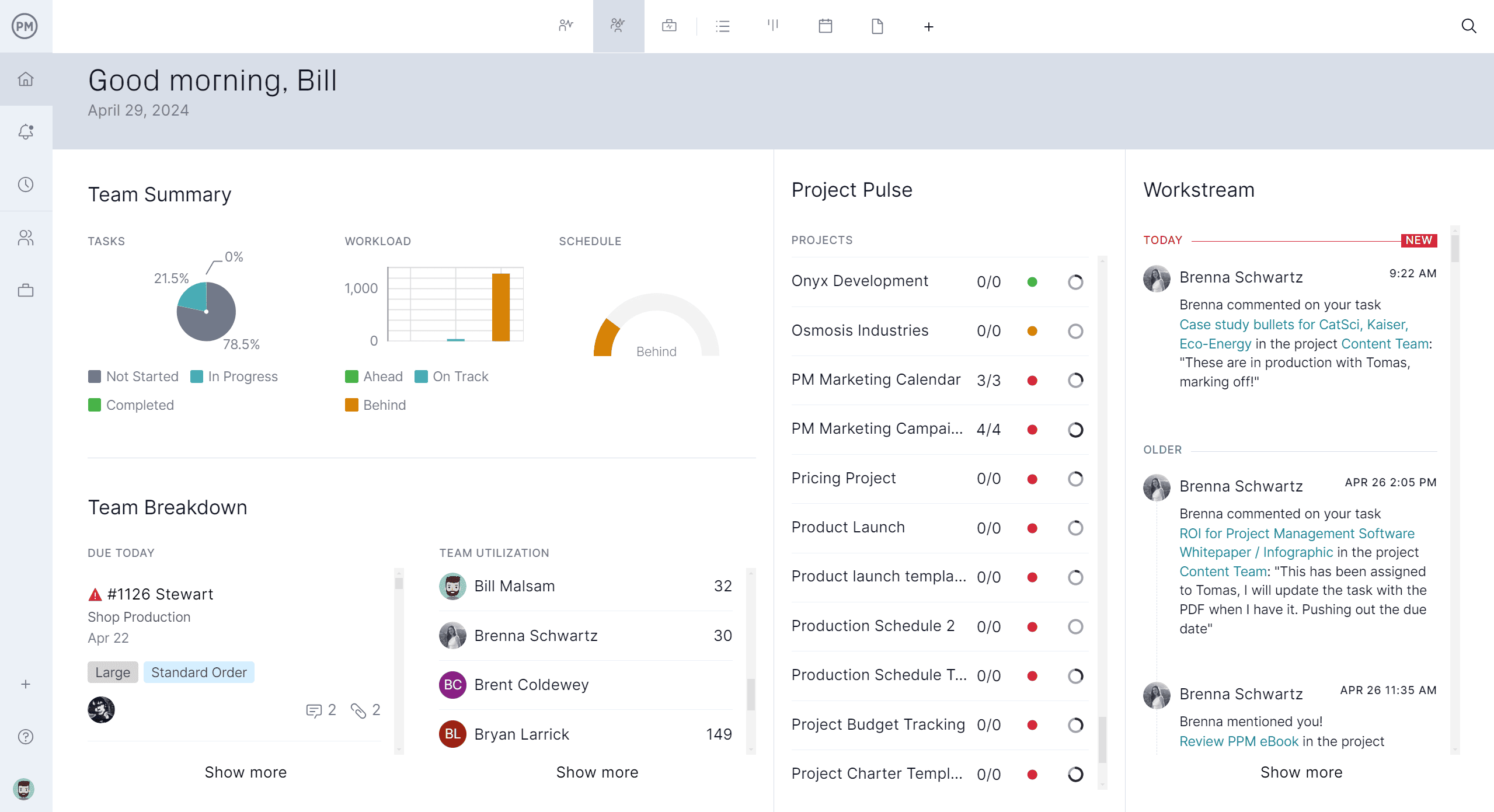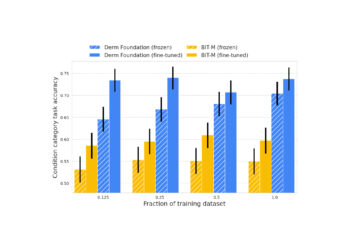Programs progress through a series of distinct phases known as the program life cycle. These phases guide how organizations define, execute and close programs effectively while ensuring strategic objectives and benefits are achieved.
Understanding these phases helps program managers coordinate complex initiatives, align with business goals and deliver lasting value through structured program management.
What Is the Program Life Cycle?
The program life cycle refers to the sequence of phases a program passes through from its initiation to its closure. It provides a structured approach for defining, delivering and sustaining benefits by managing related projects and initiatives under a single strategic umbrella. The life cycle ensures that programs remain aligned with organizational strategy while delivering their intended value efficiently and effectively.
While the program life cycle resembles the project life cycle in its phased approach, their purposes and phases are distinct. The program life cycle focuses on strategic benefits and managing interrelated projects rather than producing a single deliverable. In this blog, we’ll analyze the phases defined by the Project Management Institute (PMI) in its Standard for Program Management guide, offering a detailed look at the three key stages that guide successful program execution and closure.
Project management software supports the program life cycle by organizing related projects under a unified structure, helping teams coordinate goals, schedules and resources across multiple initiatives. It centralizes data, improves communication between project teams and allows stakeholders to monitor progress, risks and performance throughout each stage of the program—from initiation through planning, execution, control and closure.
ProjectManager is award-winning project and portfolio management software that helps manage the program life cycle by offering real-time tools that connect multiple projects under one platform. Program managers can use portfolio dashboards to monitor key performance metrics across projects, apply resource management tools to balance workloads and use Gantt charts to align timelines and workflows.
With built-in reporting and timesheets, ProjectManager also provides the visibility and control needed to track program progress, manage budgets and ensure that all efforts support strategic business goals. Get started with ProjectManager today for free.


The 3 Phases of the Program Life Cycle Defined
The program life cycle is divided into three distinct phases that structure how programs deliver strategic benefits. These phases—definition, benefits delivery and closure—guide program managers in aligning initiatives with organizational goals. Below, we explain each phase as outlined in PMI’s Standard for Program Management to help you master program execution.
Program Definition Phase
The program definition phase establishes the foundation of the program by articulating its purpose, expected benefits and alignment to organizational strategy. During this phase, the business case is developed, the program charter is created and key stakeholders are identified.
Governance structures and decision-making processes are also set up to ensure effective oversight. Program managers define the roadmap of component projects, high-level schedules and resource requirements. This phase ensures everyone understands the program’s objectives and provides authorization to move forward. By clearly defining scope, benefits and responsibilities, organizations minimize risks and maximize the likelihood of delivering strategic value successfully.
Program Benefits Delivery Phase
The benefits delivery phase focuses on executing the program to achieve its intended outcomes. Here, component projects and activities are launched, coordinated and monitored to deliver incremental benefits as planned.
Program managers oversee interdependencies between projects, resolve conflicts and adjust plans as necessary to keep the program aligned with strategic goals. This phase also involves measuring benefits as they materialize, managing risks and engaging stakeholders to maintain momentum. Ongoing governance and performance monitoring ensure that resources are used efficiently and benefits realization stays on track. This iterative phase continues until the program achieves its strategic objectives and benefits.
Program Closure Phase
The program closure phase formally concludes the program once its objectives have been achieved or it is determined that continuation is no longer viable. Program deliverables are transitioned to operations and ongoing benefits are confirmed. This phase includes releasing resources, obtaining stakeholder acceptance and validating that intended benefits have been delivered or documented.
Lessons learned are captured to inform future programs and improve organizational practices. Administrative closure involves finalizing contracts, archiving documentation and conducting a formal closeout review. By closing systematically, organizations ensure that programs are completed responsibly and that their strategic impact is fully realized and understood.
How to Manage the Program Life Cycle: Key Activities and Documentation
Successful program management requires specific activities and documents that guide decision-making and track progress. These artifacts provide clarity, align stakeholders and ensure the program remains focused on delivering benefits. Below, we highlight two essential elements—business case and program charter—and explain their definitions and significance within the program life cycle.
1. Write a Business Case
A business case is a document that justifies the need for a program by presenting its expected benefits, costs, risks and alignment with organizational strategy. It evaluates whether the program is a worthwhile investment by comparing potential outcomes with alternative options, supporting informed decision-making about initiating and prioritizing the program.
Serving as the foundation of the program definition phase, the business case helps stakeholders understand why the program exists, what it aims to achieve and how it aligns with organizational goals. A strong business case secures executive sponsorship and sets clear expectations for benefits realization throughout the program life cycle.
2. Create a Program Charter
A program charter is a formal document that authorizes the program to begin. It defines the program’s objectives, scope, key stakeholders, governance framework and high-level timeline. The charter provides clarity about roles, responsibilities and decision-making authority, ensuring all stakeholders are aligned before program execution begins.
By officially marking the start of the program, the charter creates a shared understanding among stakeholders. Everyone involved knows their roles and the program’s boundaries, reducing misunderstandings and conflicts. Establishing authority and direction early on supports effective governance throughout the life cycle and ensures consistent alignment with strategic goals.
3. Make a Program Roadmap
A program roadmap is a high-level visual plan that outlines the major components, milestones and timelines of a program. It shows how projects and initiatives interconnect, highlighting dependencies and sequencing. The roadmap helps stakeholders understand the program’s path toward delivering benefits and ensures alignment between strategic objectives and execution.
Providing a clear overview of the program’s structure and progression, the roadmap helps coordinate multiple projects, manage interdependencies and communicate expectations to stakeholders. By illustrating the big picture, it keeps the program aligned with strategic goals and facilitates effective decision-making throughout its life cycle.
Most program roadmaps are created using Gantt chart software, which visually organizes tasks, timelines and dependencies. This software makes it easy to adjust schedules, track progress and identify potential conflicts. By leveraging Gantt charts, program managers can maintain an accurate, flexible and collaborative roadmap that guides successful program delivery and benefits realization.
4. Establish a Program Governance Framework
A program governance framework is a set of policies, processes and structures that guide decision-making and oversight throughout the program. It defines how the program is controlled, how progress is measured and how accountability is maintained. This framework ensures consistency, transparency and alignment with organizational strategy.
Key program governance roles include the program sponsor, who provides strategic direction and resources; the program manager, who oversees daily execution and coordination; and the program steering committee, which provides oversight and resolves escalated issues. These roles work together to ensure the program delivers its intended benefits while adhering to organizational standards and stakeholder expectations.
Related: Best Project Portfolio Software of 2025
5. Create a Program Benefits Plan
A program benefits plan is a document that identifies, defines and quantifies the benefits a program is expected to deliver. It outlines how and when benefits will be realized, who is responsible for them and how they align with strategic objectives. The plan provides a roadmap for measuring success throughout the program.
By clarifying the link between program activities and strategic goals, the benefits plan ensures focus on outcomes rather than just outputs. It guides decision-making, prioritization and performance monitoring across the life cycle, helping stakeholders stay aligned on what the program is intended to achieve and when those benefits should materialize.
6. Plan Each Project in the Program
At this point in the program life cycle, a project management plan is developed for each project within the program. These plans detail scope, schedule, budget, resources, risks and quality criteria for the individual projects. Coordinating these plans ensures alignment across all components, addresses interdependencies and supports the overall program objectives effectively and efficiently.
7. Execute and Monitor Projects in the Program
During this stage of the program life cycle, the component projects move into their execution phase. This is when deliverables are produced and work gets done. Simultaneously, program managers monitor progress, performance and risks to ensure projects remain aligned with program goals. Effective oversight here keeps the program on track and facilitates timely benefits realization.
Related: 10 Free Project Portfolio Management Templates for Excel & Word
8. Assess Benefits Realization
As projects within the program are executed, it’s crucial to continuously assess whether the expected benefits are being realized. Tracking progress against the benefits plan helps ensure outcomes align with strategic objectives. Communicating benefits realization to stakeholders builds trust, demonstrates value and supports informed decision-making about any adjustments needed to keep the program on course.
9. Write a Lessons Learned Document
Once the projects within the program have been completed, documenting both successes and challenges in a lessons learned document becomes essential.
This record captures insights about what worked well and what could be improved, providing valuable knowledge for future programs. Sharing these findings helps the organization grow, avoid repeated mistakes and enhance overall program management practices.
11. Release Program Resources
Once the program is completed, it’s important to release program resources in an orderly and transparent manner. This includes reassigning personnel, returning borrowed equipment, closing contracts and freeing up budgets. Properly releasing resources ensures organizational efficiency, reduces unnecessary costs and allows team members and assets to be redeployed to other strategic initiatives without delay.
12. Conduct Formal Program Closure Procedures
Final program closure involves formal procedures to ensure everything is properly concluded. This includes verifying all deliverables, obtaining stakeholder acceptance, archiving documentation and confirming that benefits have been realized or documented. A formal closeout meeting may also be held to review the program and officially recognize its completion, providing closure for all involved parties.
Related Program Management Templates
There are many free program management templates available from our site for those who are not ready to upgrade to project management software. Our free templates for Excel and Word cover all aspects of managing projects. Here are just a few that can help manage the program life cycle.
Program Roadmap Template
Download this free program roadmap template to outline the timeline, key milestones and strategic goals of multiple related projects within a program. It helps align teams and stakeholders by showing how individual projects contribute to broader objectives and when major deliverables are expected.
Multiple Project Tracking Template
This free multiple project tracking template is a centralized tool used to monitor the progress, status and performance of several projects at once. It includes fields for project names, deadlines, task completion, assigned team members and key metrics, allowing managers to compare timelines, spot risks and coordinate resources across initiatives more efficiently.
KPI Dashboard Template
This free KPI dashboard template is a visual tool that displays key performance indicators in one place to help track progress toward goals. It includes charts, graphs and tables that show metrics like budget, timeline, resource use or quality, making it easier to monitor performance, identify trends and make informed decisions quickly.
How to Manage the Program Life Cycle with ProjectManager
Managing the program life cycle with ProjectManager offers far more control, visibility and efficiency than static templates. While templates must be updated manually and provide limited insight, ProjectManager connects all projects in a program under one dynamic platform with real-time data. Multiple project views—including Gantt charts, kanban boards, task lists, calendars, sheets and roadmaps—let program managers coordinate work across teams, align projects to broader goals and visualize how everything fits together on one timeline.
For example, dynamic roadmaps give you a high-level view of multiple projects in a single timeline, making it easy to align initiatives with strategic goals. You can adjust timelines, link dependencies and track progress in real time to keep your entire program on course.
Watch this brief video to learn more about how to effectively manage portfolios with ProjectManager.
Manage Resources Across Multiple Projects
Our resource management features help allocate team capacity across the program with tools like availability settings, color-coded workload charts and a centralized team page. These tools ensure the right people are assigned to the right tasks without overloading anyone, while giving managers visibility into who’s working on what across multiple projects. This makes it easier to optimize performance and keep work balanced at scale.
Track Program Metrics in Real Time
For tracking, use real-time dashboards, customizable reports and secure timesheets that capture critical data across the entire program. Dashboards give program managers instant insight into progress, costs and workloads. Reports can be tailored to highlight portfolio metrics, while timesheets track labor hours and support accurate forecasting. These tools work together to monitor program health, identify issues early and keep stakeholders informed every step of the way.
Related Program Management Content
The program life cycle offers a broad overview of program management, but there is much more to learn. For those who would like to read deeper into the subject, below are some recent articles we’ve published on related topics, such as the program roadmap, management plan and more.
ProjectManager is online project and portfolio management software that connects teams whether they’re in the office or out in the field. They can share files, comment at the task level and stay updated with email and in-app notifications. Join teams at Avis, Nestle and Siemens who use our software to deliver successful projects. Get started with ProjectManager today for free.
